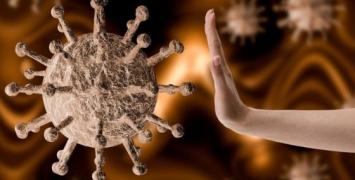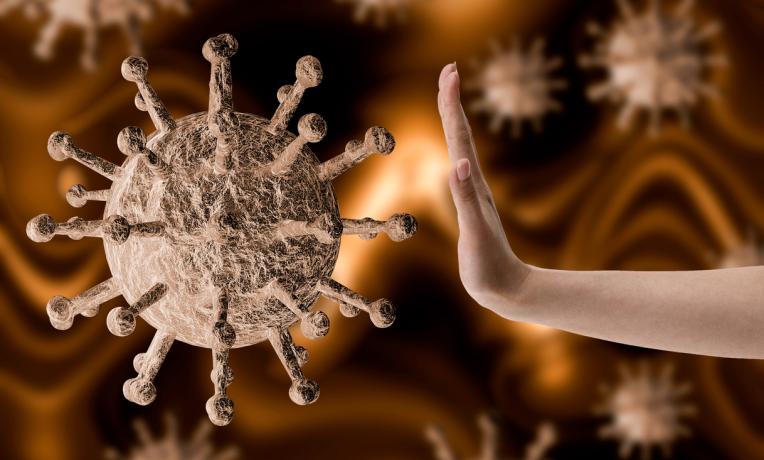
List of ERC-funded research projects related to coronavirus, epidemiology and virology as well as other relevant disciplines
Lipid mediators as predictors of disease severity
 Jesmond Dalli, University of London - Queen Mary College, United Kingdom
Jesmond Dalli, University of London - Queen Mary College, United Kingdom
As a researcher, I am interested in uncovering inflammation and to understand how the protective capacity of the body becomes disrupted by disease. When the coronavirus pandemic broke out, it became apparent that uncontrolled inflammation was a key aspect leading to the hospitalization of many patients. We sought to apply our skills to contribute to understand what led some patients infected with SARS-Cov-2 virus to develop severe symptoms. With this knowledge, a more effective treatment for these patients can be designed.
- Read more
-
Infection with SARS-Cov-2 virus leads to a wide spectrum of illness severity, going from asymptomatic infection to life-threatening Acute Respiratory Distress Syndrome (ARDS). We know that in patients with underlying health conditions, in particular chronic inflammatory diseases - the course of the infection is worse. Importantly, the mechanisms driving severity still remain unclear. As long as these processes are not fully understood, we cannot identify treatments for COVID-19.
It seems that the development of severe disease is not only linked to a high viral load but also to a delayed and excessive immune response. To stop the infection, our body has to react with a timely, coordinated immune response. One aspect of this process that, to date, has not been properly investigated in COVID-19 patients is the role of lipid mediators (LMs). These molecules are produced by essential fatty acids and have a key function in all the stages of the concerted immune response against inflammation. Three families of specialised LMs, derived from the well-known omega-3 fatty acids, are essential to fight bacterial and viral infections, such as influenza, by controlling replication of the virus in the body as well as by activating the innate immune system.
LMs are the focus of my research at Queen Mary College. In order to clarify the potential role played by LMs in patients with COVID-19, together with another group, led by Prof Gerard Curley, based at the Royal College of Surgeons in Ireland, we conducted a study at Beaumont Hospital in Dublin. We observed two groups of patients: the first with severe disease, requiring supplemental oxygen or non-invasive ventilation, and the second critically ill, treated in the Intensive Care Unit with invasive mechanical ventilation. We measured the concentration of LMs in the blood samples of these patients and analysed them.
We found out that critically ill patients had lower levels of LMs, compared to those with severe disease. This outcome suggests that a dysregulated LM synthesis in COVID-19 patients is correlated to an unfavourable development of the disease. With this study, we have discovered the usefulness of measuring, the concentration of LMs at the onset of infection to differentiate patients with severe life-threatening disease from patients with milder disease. Early diagnosis of severe disease could lead to timely life-saving treatments, including those stimulating the immune response.Jesmond Dalli was awarded an ERC Starting Grant in 2015
COVID-19’s impact on the brain
 Vincent Prévot, Inserm , France
Vincent Prévot, Inserm , France
I am a neuroscientist at the Institut National de la Santé et de la Recherche Médicale (Inserm) in Lille.I am one of the three Principal Investigators of an ERC Synergy project (together with Markus Schwaninger and Ruben Nogueiras) about the role of specialized glial cells called tanycytes in healthy ageing. Among other functions, tanycytes actively shuttle metabolic signals to hypothalamic neurons that control food intake.
- Read more
-
Since the outbreak of the COVID-19 pandemic, our three laboratories have been working synergistically to improve the world’s understanding of the virus. To date, we have published the results of four studies on COVID-19. As early as June 2020, we established that the hypothalamus is a hub for COVID-19 brain infection and pathogenesis. Secondly, we demonstrated in a study led by Ruben Nogueiras that obesity and "fatty liver disease" increase the vulnerability of the liver to SARS-CoV-2 infection in patients.
As the third step, we focused on the neurological consequences of COVID-19. It was increasingly apparent that millions of people around the world would be infected. However, the long-term impact of the virus on the body and, more precisely, on the brain was not clear. As scientists, we foresaw this impact and felt compelled to help provide the information needed to shape future medical treatment.
Markus Schwaninger noticed in patients who had died from COVID-19 that the virus had caused blood vessel pathology in the brain. We discovered that one protein expressed by the virus, Mpro, is able to kill specific cells, the endothelial cells, which compose the blood vessel walls and insulate the brain from the blood flow by forming the blood-brain barrier. This could sequentially cause blood to enter previously protected regions of the brain and lead to the creation of ‘ghost vessels’, i.e. remnants of lost blood vessels, with no blood coming through. Consequently, the concerned regions of the brain are first subject to microhemorrhages and then deprived of oxygen and glucose.
An important question is whether people who contract COVID-19 face increased chances of brain problems. We turned to hamsters to find more answers. Hamsters are reliable scientific models for human respiratory illnesses and have been used in previous studies on infectious diseases, including COVID-19. Unlike mice, they are both naturally susceptible to infection by SARS-CoV-2 and develop an immune response and respiratory illness symptoms similar to those in humans with minor forms of COVID-19.
Fortunately, hamsters with minor forms of COVID-19 have shown that some damage to the brain is reversible. And hopes are that brain damage in humans is reversible too. Targeted therapy may be a key determinant for a good prognosis. Despite these important insights, many questions regarding the impact of COVID-19 on the brain remain unanswered. For example, what brain cells are damaged specifically because of COVID-19 and what are the repercussions of this damage?
Equally, we do not know yet whether any abnormal changes to the brain tissue remain and affect the damaged brain's ageing. We know that people who got the Spanish Flu had a greater probability of developing neurodegenerative diseases such as Parkinson's later in life. Aware of this, our research creates future avenues for scientists to take in their quest to better understand the long-term consequences of COVID-19 and the impact of the virus on the brain.
Further research is also necessary to understand the long-term neurological consequences of COVID-19 in children. Most recently, our findings suggest that GnRH neurons, cells in the brain that control the release of reproductive hormones, are particularly vulnerable to SARS-CoV-2 in both human adults and foetuses, with potentially devastating long-term consequences on fertility and brain development, respectively. All this evidence will be able to help determine future treatments for millions of people.
What our overall research project shows is that the impact of COVID-19 on humans remains largely obscure. Findings like ours show the enormous benefits of transdisciplinary and synergistic collaborations for COVID-19 research and science in general.
Vincent Prévot is a co-recipient of an ERC Synergy grant for project WATCH, together with Markus Schwaninger (University of Lübeck) and Ruben Nogueiras (USC, Spain).
09-11-2021
Childbirth patterns during lockdown
 Arnstein Aassve, Bocconi University, Italy
Arnstein Aassve, Bocconi University, Italy
I am a full professor in Demography at Bocconi University in Italy. My ERC-funded project looks at the interaction between global forces and local cultural norms, presenting a new framework for the analysis of family demographics. In our globalised world, ideas and information are spreading quicker than ever, which suggests convergence in terms of values, ideas and behaviour. However, our research shows that this is not always the case as local cultural norms interact with these common forces.
- Read more
-
When the COVID-19 pandemic broke out, my colleagues and I decided to investigate how the pandemic influenced fertility in a number of high-income countries. In the course of history, spikes in mortality that resulted from war, famines or pandemics were followed by changes in fertility. These changes often resulted in fewer births in the short term, but birth statistics recuperated again in the following years.
I was interested in analysing if there was a similar pattern during the COVID-19 pandemic and if the economic shutdowns and the stay-at-home policy led to a baby boom. Answering this question is crucial because it has consequences for our ageing population, and can shape future health challenges and the economic growth potential across the globe.
We looked at birth rates in 22 high-income countries from 2016 until the beginning of 2021. Our findings might have surprised some that thought that the pandemic led to a “baby boom”. The claim was that couples had more time for each other because of the lockdown and were thus more likely to have intercourse.
However, empirical evidence for this claim is sparse. Our analysis found that in the final months of 2020 and the beginning of 2021, 7 of the 22 countries had statistically significant declines in birth rates. We had compared these rates to the same period in the previous years. Birth rates are usually different across seasons and over longer periods. One must also note that the overall birth rates in wealthy countries have been gradually falling in recent years. However, the COVID-19 pandemic seems to have caused a larger drop than expected, with bigger declines especially visible in South European countries (Italy, Portugal and Spain).
Uncertainties associated with the pandemic and its consequences for families’ economic circumstances are the most obvious reason for these trends. People feel insecure about the economic impact of the pandemic and this might lead them to postpone their plans to have children. It now needs to be seen if this trend continues or if birth rates go up again.Arnstein Aassve won an ERC Starting Grant in 2007 and an ERC Advanced Grant in 2015
19-04-2021
Bridging the information gap between Covid-19 science and citizens
 Claire Wyart, Paris Brain Institute, France
Claire Wyart, Paris Brain Institute, France
I am a neuroscientist and a biophysicist, and my ERC-funded research investigates how sensory inputs from the central nervous system affect locomotion and posture. When the COVID-19 crisis reached a peak last year and my country entered the first lockdown, I understood people needed digestible, trustworthy, practical information. There was a feeling of growing mistrust from the population towards the political authorities because people could not find the information they were looking for – it was very important to bring science to the forefront. As a scientist, I felt compelled to help in tackling this information gap.
- Read more
-
With my collaborator Dr. Virginie Courtier-Orgozozo, who is also an ERC grantee, we decided to create a platform called Adiós Corona that provides scientific research results and practical resources accessible to everyone. At the beginning of Adiós Corona, there were only Virginie and I to search the literature and write Q&As. She was in charge of the practical approach to the content, whereas I was responsible for the background knowledge. We acknowledged our own limitations on the topic of Cov-Sars-2, so we started looking for experts in the field, such as epidemiologists, virologists, immunologists and physicists, to join our project.
Several scientists from my own network were already willing to communicate their research findings to the general population but they were lacking the means to do so. When they heard of Adiós Corona, they expressed interest in being a part of it. The project then reached a broader audience of potential volunteers thanks to our research institutions who promoted it on their websites. People from countries where scientific research related to Covid-19 was not widely available, reached out to us too. Word-of-mouth across the world attracted journalists, and this enabled us to grow the project even more.
Adiós Corona is community-oriented. The collaborators involved in the project creation and development (scientists, translators, graphic designers, etc.) are all volunteers who invest their time and effort in order to contribute to the democratisation of scientific research. Thanks to their work, our initiative achieved a huge success, as reflected both in the traffic increase registered on the website and the written feedback from the visitors.
For me as a scientist, it has been extremely gratifying to feel useful in the midst of a deadly pandemic and to help citizens navigate it. Even though Adiós Corona is not directly linked to my research, the skills I have developed in interdisciplinary neuroscience help: in both fields, scientists from various backgrounds are working together to try to reach a quantitative understanding of the diversity of biology.
Adiós Corona has been a successful team effort to bridge the gap between science and citizens. Today, Virginie Courtier-Orgozozo is the one coordinating the Adiós Corona website, as it evolves concomitantly with the pandemic. On my side, I have been working on the implementation of quick, massive screening saliva tests for COVID-19 for children and persons with handicaps, which is complementary to the Adiós Corona project.
Claire Wyart won an ERC Starting Grant in 2012, an ERC Proof of Concept Grant in 2018, and an ERC Consolidator Grant in 2020.
15-12-2020
From cancer to Covid – groundbreaking innovation requires decades of research
 Uğur Şahin, Chief Executive Officer and Özlem Türeci, Chief Medical Officer, © BioNTech SE 2020, all rights reserved
Uğur Şahin, Chief Executive Officer and Özlem Türeci, Chief Medical Officer, © BioNTech SE 2020, all rights reserved
Uğur Şahin’s ERC-funded ‘Summit’ project explores the potential use of novel mRNA vaccines against cancer. Taking advantage of the mutations occurring in cancer, it studies novel immunological concepts, supported by the development of bioinformatics and automated data analysis tools in order to optimise target selection and the overall vaccination strategy. The research aims to fundamentally change and individualise the treatment of cancer patients.
- Read more
-
Professor Şahin and his partner Özlem Türeci have been studying messenger ribonucleic acids (mRNA) for more than two decades. mRNA has a broad transformational potential and could combat diseases by modulating and redirecting the immune system. To date, many hundreds of cancer patients have been treated with mRNA in their cancer vaccine studies. They recognised that their mRNA vaccines could be suited to addressing pandemic threats from newly emerging viruses.
"The expertise that we gathered in cancer trials encouraged us to extend the use of mRNA vaccines towards prevention of infectious diseases,” says Şahin. “However, what has happened in the last 11 months and the impact of our research is beyond our imagination."
"In January 2020, when the genetic sequence of the virus became available, my team at BioNTech initiated an mRNA vaccine discovery program in which we engineered, manufactured and tested in parallel multiple mRNA vaccine candidates. Our “Lightspeed COVID-19 mRNA vaccine project” was able to identify BNT162b2 as the best candidate among the various prototypes, in less than 11 months.
BNT162b2 is the first mRNA drug and the first drug of any type with proven efficacy as a COVID-19 vaccine that is authorised for emergency use in several countries, and validates mRNA as a major new tool to combat pandemics and other infectious disease outbreaks.
It is the first time in human history that an effective vaccine against a new pathogen has been developed from scratch, evaluated in a phase 3 trial, and is authorised while a pandemic is ongoing.
Groundbreaking innovation requires decades of research and contributions from multiple research frontiers until it reaches maturity to provide benefit for humanity. The success of an idea is rarely based on a single discovery but on a long-term persistence and financial support of early pioneers believing in and pursuing the vision. It depends on the formation of a new research field, interdisciplinary collaborations and continued funding of a research community over years until a critical mass is achieved.
We live in a time of unprecedented grand challenges of global dimension and with relevance for humanity. We can address these challenges only if we continue and further intensify overall funding and investments into frontier and applied research and enable their cross-fertilization."
Uğur Şahin is a professor of experimental oncology at the Johannes Gutenberg University Mainz and the CEO of the company BioNTech. His research has been supported by various parts of the 5th, 6th and 7th EU Framework Programmes for Research and Innovation, including an Advanced Grant from the ERC in 2018. He also received financing from the European Investment Bank in 2020 in relation with BioNTech’s COVID-19 vaccine trials.
12-11-2020
High-quality filtering material for the local fabrication of masks
 Johanna H. Meijer, Professor, Leiden University Medical Center, Netherlands
Johanna H. Meijer, Professor, Leiden University Medical Center, Netherlands
I am a neurophysiologist, and my ERC-funded research explores how artificial light influences the biological clocks of all living creatures and how we can improve the lives of people most vulnerable to, for instance, depression, fatigue and shift work. Once the coronavirus crisis broke out, I decided to temporarily shift my research focus and contribute to the health crisis response.
- Read more
-
The transmission of the SARS-CoV-2 potentially via respiratory droplets, dramatically increased the demand for high-quality respirator masks, causing a lack of personal protective equipment for healthcare workers.
My response to the crisis started spontaneously. I became inspired by a Turkish tailor living in our town, who offered to make face masks for hospitals in Leiden, free of charge. This generous offer encouraged me to search for a safe and commonly available material that would allow hospitals to produce their masks.
One of the many ideas I received was from a medical engineer at the Leiden Medical Center. He proposed a particular sterilisation and wrapping material routinely used for surgical instruments (Halyard Quickcheck H300), suggesting that it may be suitable for the production of FFP2, N95, or surgical masks. These types of masks are recommended for healthcare workers by the World Health Organisation.
And indeed: we found that this broadly available wrapping material met the required filtering criteria. Three layers of the material achieved a filter efficiency close to the FFP2 and N95 masks. Two layers meet the FFP1 respirator mask's criteria, while one layer was equivalent or even better than a ‘surgical mask’. The material was moreover shown to be very resilient to repeated sterilisations, making it even more attractive as an option.
The model we propose is relatively easy to make, and it is designed to enable breathing through the entire surface, which increases breathability and comfort. We think that it could be especially useful for hospitals in rural areas, where protective equipment may not be as readily available.
To make our discoveries accessible to people worldwide, we have set up a website. So far it is available in the 15 most spoken languages, covering over 85 % of the world population. We are already seeing visits from a broad range of countries, such as Nepal, Turkey and the African countries. Hopefully, many more people from different parts of the world will benefit from this discovery.
Last but not least, to get all of this done, we relied on informal and already existing contacts with fellow researchers from different backgrounds and countries. They all contributed eagerly, rapidly, and for free. Clearly, science has the potential to bring people together, regardless of their country or religious background.
Prof. Johanna H. Meijer was awarded an ERC Advanced Grant in 2018.
01-07-2020
Developing a new tool to diagnose Covid-19
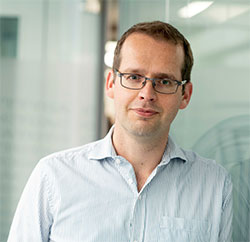 Matthew Gibson, Professor, University of Warwick, UK
Matthew Gibson, Professor, University of Warwick, UK
I am a chemist and my ERC-funded research uses chemistry to address biomaterial challenges, particularly related to cell storage. When coronavirus broke out, we immediately decided to apply our skills and to use our chemistry tools to address the Covid-19 challenge.
- Read more
-
We started working on the development of a new rapid test for Covid-19 detection with Iceni Diagnostics, a UK Biotech. The current tests used to diagnose the virus are based on PCR (polymerase chain reaction) which detects the presence of the virus. However, the challenge of this method is that it needs infrastructure and trained scientists. We are developing the use of glycans (sugars), rather than antibodies or genetic material, to target proteins on the outside of the coronavirus. Glycans are crucial in a vast range of infection processes, and can hence exploiting them to detect the virus might offer new biosensing opportunities.The sooner you can identify an infection, the sooner the spread can be stopped.
The real benefit of the test we are trying to develop is simplicity and speed. We are aiming to develop an easy-to-use and low-cost device, which looks like a home pregnancy test. The rapid detection of coronavirus is crucial because there are few treatments and no vaccines (yet). The sooner you can identify an infection, the sooner the spread can be stopped. Ideally, the result of our test will be available within 30 minutes and could be used for testing at airports and transport hubs, for example. It would be a huge benefit to be able to identify infected people sooner, especially those with no symptoms. The test would also be low cost, which is crucial if you want to test a very large number of people.
The functioning of the test is actually quite simple. We basically put the glycan (sugar) onto the paper surface and put it at the same time onto a gold nanoparticle. If the virus is present, it will bind to the glycan on the surface while the gold particle also binds. This process will generate a red line, indicating a positive result. Think of it as a sandwich, where the virus will be the filling, and the two glycan-bearing components are the bread.
The next step is more testing against primary virus and patient samples. The beauty of our system is that it is fast to change each parameter to optimize it, so we are confident we will make rapid progress in the next few months.
Matt Gibson was awarded a Starting Grant in 2014 and a Consolidator Grant in 2019 as well as two Proof of Concept Grants in 2017 and 2019.
How the coronavirus damages the lungs
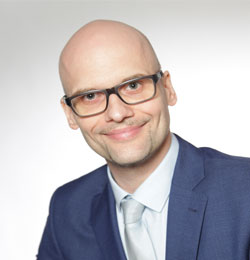 Danny Jonigk, Professor, Hanover Medical School (MHH), Germany
Danny Jonigk, Professor, Hanover Medical School (MHH), Germany
I am a pathologist and my ERC-funded research aims to understand, prevent and ultimately cure a particular group of pulmonary diseases, which lead to loss of lung function via fibrosis and are often deadly – the so-called non-neoplastic lung diseases.
- Read more
-
SARS-CoV2 can cause massive damage to the respiratory tract and can lead to fatal lung failure. When the Covid-19 pandemic broke out, my international research team and I therefore decided to look into how the virus damages our lungs, focusing on the differences between lung damages caused by an influenza virus and SARS-CoV2. We compared the lungs of Covid-19 victims and the lungs of the patients who died from an influenza flu.
We examined tissue samples to track down the pathways of SARS-CoV-2 and made a number of interesting observations. Firstly, we were able to confirm an already known damage to the lungs, which occurs when the walls of the alveoli become inflamed. This phenomenon makes it difficult for oxygen to enter the blood.
Secondly, we found a massive number of blood clots in all sections of the blood vessels, but particularly in the finest pulmonary vessels. This is what further increases the breathlessness of coronavirus patients and is similar, but less severe, in influenza patients.
Thirdly, we observed something that is usually encountered only by physicians analysing tumours or autoimmune diseases: Covid-19 apparently triggers a special form of vascularisation in the lungs, an abnormal formation of blood vessels. This fundamentally distinguishes Covid-19 from the severe lung infections caused by influenza viruses.
Our study helps understand how SARS-CoV-2 damages the lungs and why its attack is so brutal. It is yet another piece of the puzzle of this disease, but the mystery of the coronavirus is far from solved. More studies are needed to discern the mechanisms of the vascular changes in Covid-19 and to then transfer this new knowledge into therapeutic approaches.
Danny Jonigk has been awarded an ERC Consolidator Grant in 2017
26-05-2020
How are older people coping with lockdown?
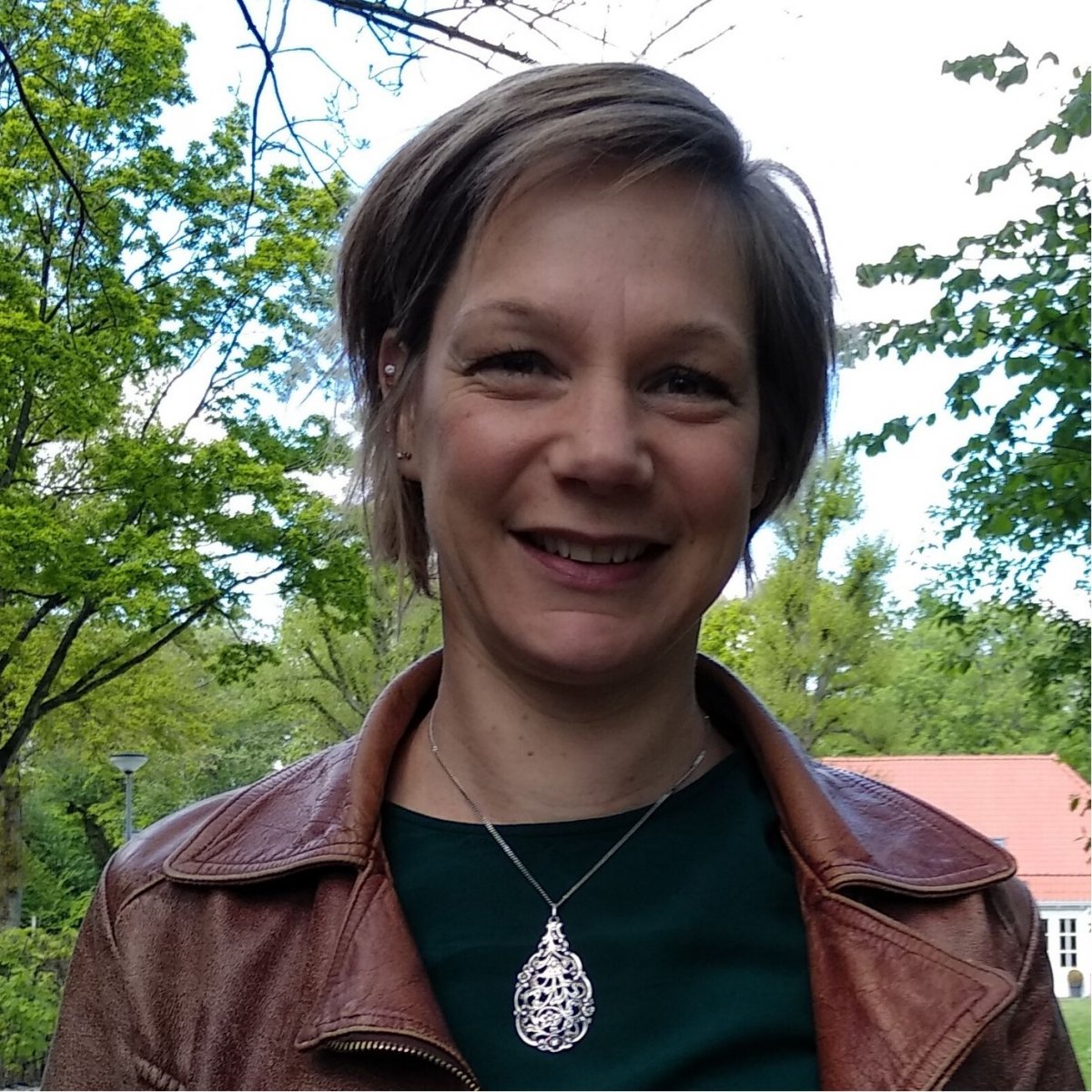 Louise Meijering, Associate Professor, University of Groningen, Netherlands
Louise Meijering, Associate Professor, University of Groningen, Netherlands
My team and I are trying to understand mobility in later life and how it impacts wellbeing. We look at the daily movements of elderly people, both inside and outside their homes - small things, like cleaning the house, gardening, but also driving or walking to the shops. We also focus on elderly people with dementia or who have suffered a stroke. We’re studying what obstacles impact mobility, be it physical obstacles like curbs, bad roads, stairs, but also social like not having anyone to help out. The point is to discover strategies that people use to overcome these problems.
- Read more
-
With the pandemic kicking in, we had to stop our fieldwork. The people we work with are a risk category and, of course, we decided to take a break. We started to think it would be interesting to see how the mobility of our participants was changing in this lockdown situation. So we talked to many of them on the phone, collecting data and looking at their adaptation strategies. I think that people were put in an extreme situation, and it’s always interesting to see how they react, because it can tell us a lot about how things are during more normal times.
What we see is that there are two extremes in how people experience these days at home. There are people who enjoy it, taking pleasure in the little chores of everyday life, activities they wouldn’t normally have the time for or new hobbies. Then there are people who feel locked-in, bored, isolated. When they speak to family via zoom or wave at their grandchildren in front of the window, it’s bittersweet. The elderly are the most at risk category, and this leaves them with feelings of anxiety, uselessness, not being able to contribute to society.
But, there is always a flipside. Our work is aimed at finding out what solutions people come up with for overcoming these feelings. We track the movements of our participants with GPS, we measure their activity with pedometers and we interview them to see how they perceived their mobility. This gives us a very comprehensive understanding of movement in later years and of solutions that might help people move around more easily. Authorities are interested in this data, as it may help make cities friendlier for the elderly, easier to navigate. Also, communities are important: a family member or a friendly neighbour can make all the difference.
I’ve always been interested in giving a voice to people who are not usually heard, through my research. I did my PhD on communities who intentionally withdraw from society. The effect that this pandemic has on our feelings, and the feelings of more vulnerable groups, I think that is very important to bring forward. As well as understanding the ways that people are finding to make the best out of this bad situation.
Louise Meijering has been awarded an ERC Starting Grant in 2018.
19-05-2020
Modeling human behavior to predict the course of the pandemic
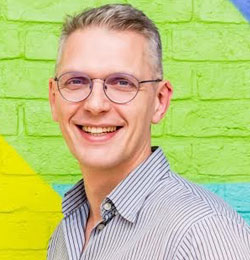 Niel Hens, Professor, University of Antwerp and Hasselt University
Niel Hens, Professor, University of Antwerp and Hasselt University
I am a biostatistician and my research revolves around the development of mathematical and statistical methods that provide insight into the spread of infectious diseases.
- Read more
-
As part of my ERC-funded research, my team and I have developed methods to predict the course of an epidemic from serological and social contact data. Our original focus was on diseases such as pertussis, cytomegalovirus and measles. However, as these methods are highly relevant for the COVID-19 pandemic, we are now prioritising the application of our methods to SARS-CoV-2.
Our focus on collecting and analysing social contact data is especially relevant for this outbreak. We have collected social contact data from different studies worldwide and made an interactive tool to help others assess the efficacy of different COVID-19 mitigation measures. Furthermore, our serology work is useful for addressing the question on immunity in the population.
We have also contributed to answering important questions such as: how much of the COVID-19 transmission occurs before symptoms occur? For instance, by using outbreak data from Singapore and Tianjin, China, we were able to estimate that the proportion of pre-symptomatic transmission was 48% for Singapore and 62% for Tianjin, China, given that control measures were in place (Ganyani et al., Eurosurveillance, 2020).
Due to this pre-symptomatic transmission of the virus, confinement measures alone might not be enough to control future local outbreaks. Our models show that we would benefit from integrating antiviral drugs, which decrease the viral load and reduce infectiousness, into the control measures. Similarly, our work shows that contact tracing performs better when combined with testing as long as the test is able to detect infections during the incubation period (Torneri et al., in press in BMC Medicine).
In addition to my ERC-funded COVID-19 research, I am part of the Belgian expert group working on the coronavirus exit strategy. I am also the coordinator of an EU-funded international consortium EpiPose, which got 3 million EUR in EU-funds in the context of the pandemic.Niel Hens has been awarded an ERC Consolidator Grant in 2015.
12-05-2020
Bat research may lead to new treatments for COVID-19
Bats are extraordinary animals. They are the only mammals that can fly and they live about ten times longer than expected for their body size. They can also tolerate and live with many viruses that kill humans, including a type of a beta-coronavirus very similar to SARS-CoV-2. In fact, scientists speculate that SARS-CoV-2 may have originated in bats.
ERC-funded researcher Emma Teeling of the University College Dublin works on trying to understand the secrets of bats’ longevity and their immune response that allow them to tolerate coronaviruses and other pathogens. The tools and insights she developed during her ERC project are turning out to be vital in the fight against COVID-19 and could lead to the development of new treatments in the future.
- Read more
-
We spoke to her about her bat research, COVID-19 and about the importance of basic research in tackling the current pandemic. ‘Research really and truly cannot be and shouldn't be entirely prescribed’, she said. ‘We wouldn’t have even known what this coronavirus was if the Chinese virus hunters hadn't been going out and surveying different bat colonies long before this pandemic started.’
Listening to this audio you are accepting SoundCloud cookies policy
Emma Teeling has been awarded an ERC Starting Grant in 2012.
29-04-2020
Stopping coronavirus at the gate
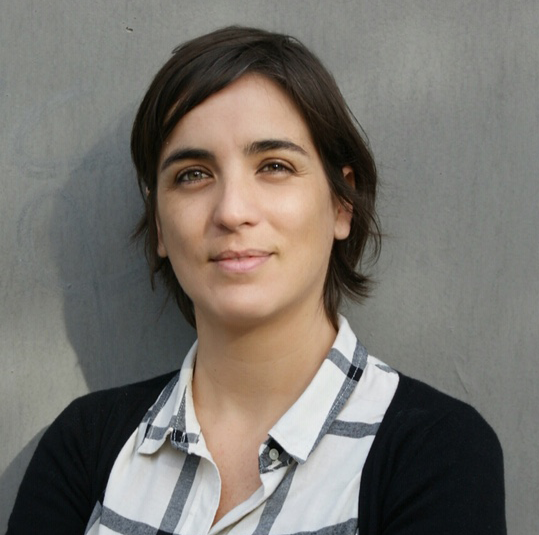 Nuria Montserrat, Institute for Bioengineering of Catalonia, Spain
Nuria Montserrat, Institute for Bioengineering of Catalonia, Spain
In my lab at the Institute for Bioengineering of Catalonia (IBEC), funded by an ERC grant, we create kidney organoids using human stem cells to investigate kidney disease and explore the effects of treatment. Using these mini organs, that have all the characteristics of a real organ, we are currently studying how the coronavirus SARS-Co-V2 interacts with and infects kidney cells. In early April, with other scientists from Austria, Canada and Sweden, we identified a drug that blocks the infection at the early stages of the replication cycle of the virus in these mini-organ cultures.
- Read more
-
Together with the lung, the kidney is one of the main organs affected by COVID-19. When the virus enters the body, it binds to the ACE2 receptor to penetrate into cells. ACE2 is a protein that can be found on the surface of many human tissues, including the kidneys. Since February, when the epidemic broke out in China, we have carried out experiments to observe what kind of damage SARS-CoV-2 causes when it enters the kidneys to further explore why they subsequently stop functioning.
We infected kidney organoids with SARS-CoV-2 and then administered different therapies. We found out that an experimental drug called APN01, already tested in patients with acute respiratory distress syndrome, dramatically reduces the amount of virus present in the body. This approach specifically targets the gate the virus must take to infect cells. The drug is designed to imitate the ACE2 receptor, so the virus binds to soluble APN01, rather than to the human ACE2 on the cell surface. In other words, the virus attaches itself to the copy of the real ACE2. This trick stops the virus from further entering the cells and replicating. Clinical trials are currently ongoing in Austria, Denmark and Germany on 200 patients with severe COVID-19 to determine if APN01 is also effective during later stages of disease development.
We have to act quickly. We have tested APN01 but we would like to try a large number of other drugs to see if they also have an effect on the new coronavirus. The use of human organoids allows us to test in a very agile way the treatments already used for other diseases or that are close to being validated. When time is short, mini organs dramatically reduce the time we would spend trying a new drug on humans.
APN01 has been invented earlier on by Prof. Josef Penninger, the leader of this collaborative study. In 2005, Prof. Penninger, also an ERC grantee, discovered the molecular mechanisms of SARS (Severe Acute Respiratory Syndrome), caused by another coronavirus, the SARS-CoV, that luckily failed to reach pandemic status in the early 2000s. SARS-CoV shares multiple similarities with SARS-CoV-2 and uses the same mechanism to bind to our cells. We really have to understand how this virus works and this is what we are trying to achieve through this international collaboration joined also by Prof. Ali Mirazimi, who performed the virus infection in the mini organs. Findings like this show the enormous benefits of transdisciplinary and synergistic collaborations for COVID-19 research and science in general.
Nuria Montserrat has been awarded ERC Starting Grant in 2014.
23-04-2020
Firm facts – how the diagnostics industry is responding to the coronavirus pandemic
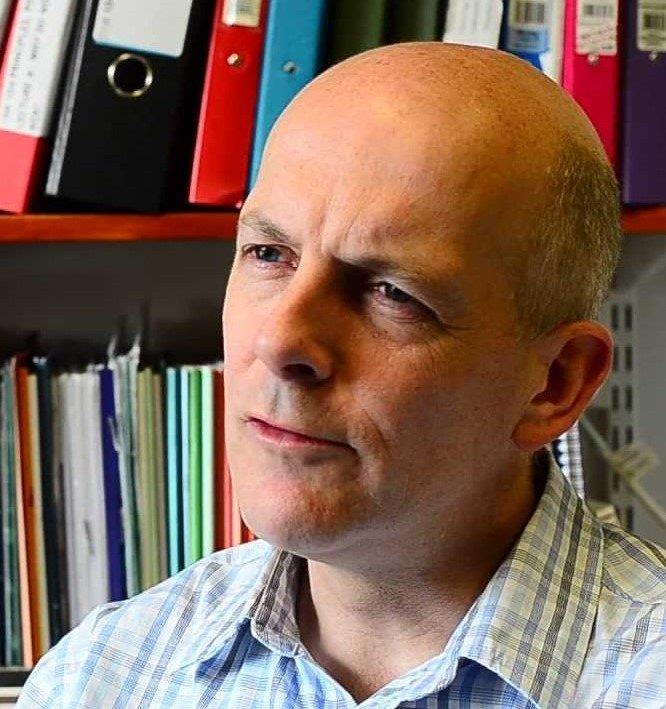 Stuart Hogarth, Lecturer in Sociology of Science and Technology at the Department of Sociology, University of Cambridge
Stuart Hogarth, Lecturer in Sociology of Science and Technology at the Department of Sociology, University of Cambridge
I am the principal investigator of the ERC-funded CancerScreen project, which examines the political economy of diagnostic innovation. Over the last three years my research team has built a database of the global molecular diagnostics industry, i.e. firms producing diagnostic tests which use DNA or RNA as the analyte.
- Read more
-
Prior to the COVID-19 outbreak, our dataset comprised some 700 firms, primarily in North America, Europe and Asia Pacific. Over the last month, we have combined our dataset with lists of COVID-19 test manufacturers produced by other organisations, such as the Foundation for Innovative Diagnostics (FIND) and the UK National Institutes for Health Research (NIHR) Innovation Lab, and trawled media coverage for additional data. We now have 303 firms in our dataset of COVID-19 molecular diagnostics firms and our main database has increased to 830 firms.
Our list of molecular diagnostics firms may be the most comprehensive
FIND and NIHR have the definitive lists because they have data on immunoassays, as well as molecular diagnostics, but we believe our list of molecular diagnostics firms may be the most comprehensive, thanks to our prior work on the sector. Also, we have data on the firms, such as their location. We are now developing a collaboration with FIND and hope to establish links with the NIHR Innovation Lab for future work.Trends in the development and commercialisation of COVID-19 tests
With our broader dataset of all molecular diagnostics firms, we have been able to compare the global industry of molecular diagnostics manufacturers with those firms that have COVID-19 tests. Asia Pacific has more molecular diagnostics firms (40 % of all firms) than either USA (29 %) or Europe (28 %), but the region is even more dominant in the COVID-19 market, with 55% of all firms.
The Asia Pacific lead is also clear if one looks at the number of firms with a test in development versus the number of firms with a test on the market. In Asia Pacific 90 % of firms have a test on the market, in Europe 78 % and in the USA 67 %.
In Germany and South Korea domestic firms are more likely to have commercialised their testsThe lag is striking, because it mirrors the global spread of the pandemic, starting in Asia Pacific and then moving to Europe and then North America. It suggests that perhaps firms could have responded more quickly when the pandemic began, which might have helped with ramping up capacity.
The differences in firm responsiveness are also striking at the national level. In Germany and South Korea – the two countries seen as having the most comprehensive testing strategies – domestic firms are more likely to have commercialised their tests compared with countries like the USA and UK, which are seen as failing in their testing strategies. In South Korea and Germany 88 % and 80 % of firms have commercialised tests, but in the UK the figure is 54 % and in the USA it is 67 %.
Link between state activism and the responsiveness of domestic firms
There may be multiple reasons for the gap, and the pattern is not consistent across all nations, but our data does suggest that strong leadership by the national government may play a role in industry responsiveness, at least at the extremes of leaders and laggards.
If the EU is to address the danger of poor quality tests, then further action must be taken
The rate of regulatory approvals is another significant difference between regions/countries. Although most countries have put in place fast-track emergency approval mechanisms, the EU already had a very low barrier-to-market entry. The ‘CE mark’ indicates that a test complies with the EU regulations, but for nearly all types of diagnostic tests manufacturers self-certify – the firm awards itself a CE mark. Given that lack of regulatory scrutiny, the EU is an attractive market for firms, thus it is unsurprising that 62 firms across China, USA, South Korea and Singapore are exporting CE-marked COVID-19 tests to the EU. In China, USA and South Korea the position is reversed – most firms with approved tests are domestic. There are 50 % more Chinese firms with a CE mark for the EU market than have approval in China, and the pattern is almost identical in South Korea. Conversely, only South Korean firms have approval in South Korea, very few firms that are not Chinese have approval in China, and that trend is replicated in the USA.
If the EU is to address the danger of poor quality tests, then further action must be taken. That is already happening at national level, as individual Member States are forced to undertake post-market evaluation to assess the quality of tests to inform their procurement decisions.
More analysis from CancerScreen
Stuart Hogarth has been awarded ERC Starting Grant in 2016.
14-04-2020
A rapid diagnostic test inspired by fireflies
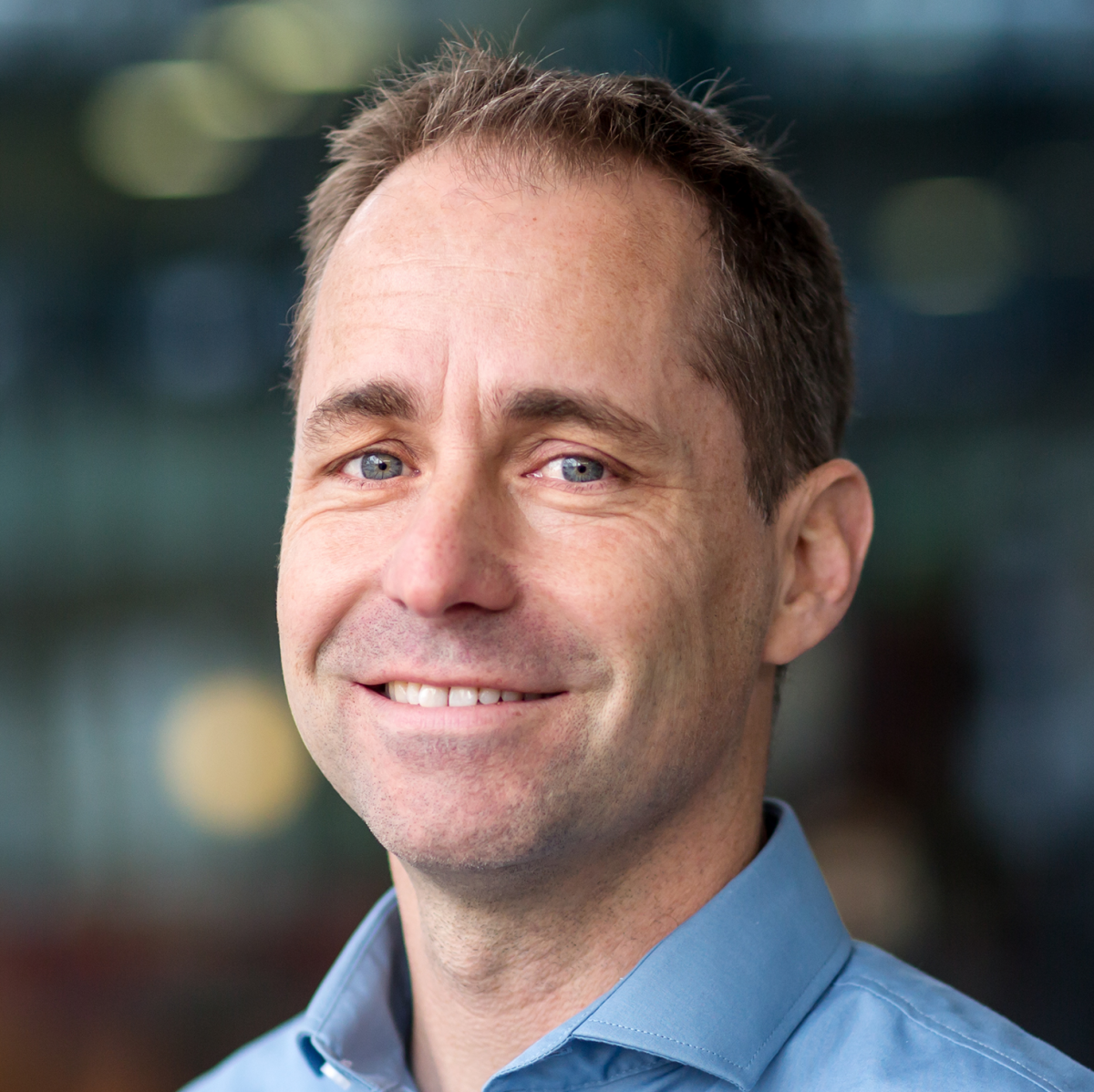 Maarten Merkx, Full Professor at the Department of Biomedical Engineering of Eindhoven University of Technology
Maarten Merkx, Full Professor at the Department of Biomedical Engineering of Eindhoven University of Technology
I am a chemist and my research explores how light-emitting proteins can be used to detect disease by detecting antibodies in the blood. When a person has virus antibodies, it means that they already had the disease - information which could be very useful in containing the spread of the diseases such as COVID-19.
- Read more
-
We call it ‘glow-in-the-dark’ paper-based diagnostics
Thanks to ERC funding, my research team and I developed a new type of rapid diagnostic test that allows detection of specific antibodies directly in the blood. The test uses sensor proteins that produce light by performing the same chemical reaction that is used by fireflies. In the presence of the target antibody, the sensor protein changes its structure which changes the colour of the light that is emitted from green to blue. The power of this approach is that the test can be done directly in blood, and the signal can be detected with the camera of a smart phone. Part of this project was also to develop a paper-based strip that contains the same testing components - we call it ‘glow-in-the-dark’ paper-based diagnostics.
The same approach could also be used to detect the coronavirusThe same approach could also be used to detect the coronavirus, and we have just started to investigate whether this works. In order to do this using our original approach, we would need to know exactly what SARS-CoV-2 antibodies look like, but recently we have developed a new type of sensor proteins that could measure all antibodies targeting a specific viral protein. The big question is whether this test is sensitive enough. If it is, the advantage of our technology is that the tests can be done quickly and don’t require expensive equipment.Our technology could also allow us to be better prepared for next global pandemic
While most of our research is now on hold, we have permission to work on COVID-19 related work. We are also working on a start-up company that would allow us to more efficiently translate the technology to the market and allow it to be employed on a larger scale. Our technology is unlikely to contribute significantly to fighting the COVID-19 pandemic in the short term, but it may become relevant if the current crisis continues for a long time. It could also allow us to be better prepared for next global pandemic, as COVID-19 is unlikely to be the last.
Rapid antibody tests are important in understanding the course of the pandemic. The underlying assumption is that a person that has had an immune response will be protected against getting the disease again, or at least have a less severe disease. If this is true this would be very important information, e.g. for those that work with vulnerable people, but also to decide whether one could visit one’s elderly parents again or go back to work. While it is expected that having antibodies will be protective, this still remains to be established for the coronavirus, and if so, how long this protection will last.Maarten Merkx has been awarded ERC Starting Grant in 2011, an ERC Proof of Concept Grant in 2013 and another ERC Proof of Concept Grant in 2016.
09-04-2020
A key step for vaccine development
 Lars Dölken, Würzburg University, Germany
Lars Dölken, Würzburg University, Germany
I hold the chair of virology at Würzburg University and I am the head of virology diagnostics there. Following the coronavirus outbreak, our institute is the major test site for COVID-19 in the city of Würzburg and the surrounding area. We are currently testing about 500 samples a day.
- Read more
-
Last year, in collaboration with other scientists, we were able explain, for the first time, why viruses manage to infect some cells, but fail with others. Discovering the mechanisms underlying infection could help identify new targets for antiviral treatment. Funded by the ERC, we developed a new powerful method, called scSLAM-seq, to track the activity of thousands of genes in a single infected cell for several hours. We have started to apply this tool to herpesvirus infections but now the idea is to use it on SARS-CoV-2, a key step for the development of a vaccine for COVID-19.
Nevertheless, a vaccine won’t be ready for at least a year and, in the meantime, we have to get the virus under control to prevent further deaths. There are a few drugs now undergoing clinical trials which I am hopeful about, but we won’t know until those trials are completed. In any case, I do hope that we will find a therapy that works.
Lars Dölken has been awarded an ERC Consolidator Grant in 2016 and an ERC Proof of Concept Grant in 2018.
08-04-2020
Searching for SARS-CoV-2 weak spot
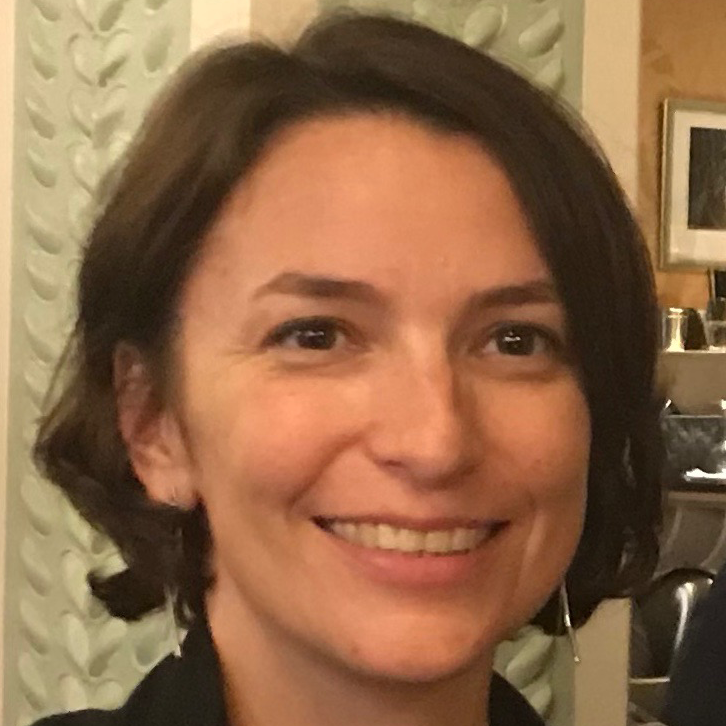 Caroline Goujon is an Institut National de la Santé et de la Recherche Médicale (INSERM) researcher. She works at the Institut de Recherche en Infectiologie de Montpellier (IRIM), a Centre National de la Recherche Scientifique (CNRS) / Montpellier University institute.
Caroline Goujon is an Institut National de la Santé et de la Recherche Médicale (INSERM) researcher. She works at the Institut de Recherche en Infectiologie de Montpellier (IRIM), a Centre National de la Recherche Scientifique (CNRS) / Montpellier University institute.
France is currently under lockdown. Researchers and staff from CNRS and INSERM laboratories have been asked to work from home, unless they work on a COVID-19-related project or have essential tasks that can’t be stopped. We have quickly decided, together with other researchers from our institute, the IRIM, to focus our efforts for the next few weeks on the SARS-CoV-2, which is at the origin of the current pandemic.
- Read more
-
This is our duty, as virologists, to participate in the world research efforts on COVID-19
My ERC Starting Grant ANTIViR aims at studying the natural defense mechanisms against two major pathogens: influenza A virus and HIV-1. But we think that this is our duty, as virologists, to participate in the world research efforts on COVID-19, if and when possible. Thanks notably to the support of our head of institute, Jean-Michel Mesnard, and to the responsiveness of an IRIM group leader, Raphaël Gaudin, we have rapidly obtained all the necessary authorisations to perform experiments with SARS-CoV-2 and we received the virus three weeks ago from the Pasteur Institute. Thanks to the expertise of an experienced researcher on other respiratory viruses in my team, Olivier Moncorgé, we have been able to rapidly amplify the virus and set up assays to measure its replication at the CEMIPAI [Centre d’Etudes des Maladies Infectieuses et Pharmacologie Anti-Infectieuse] facility. This is a CNRS Biosafety Level-3 facility, which currently hosts Olivier and myself for all our work on class 3 pathogens.
In the framework of my ERC ANTViR grant, we will study the sensitivity of SARS-CoV-2 to interferon and to various restriction factors that we study in the lab. My ERC Proof of Concept FluAttack project aims at carrying out the proof-of-concepts of drugs in influenza treatment. This is another respiratory virus, which can potentially cause pandemics. However, in the current context, we’re planning to test our molecules, as well as other antiviral molecules developed by colleagues, against SARS-CoV-2, in order to possibly identify active compounds against this virus.
Caroline Goujon has been awarded an ERC Starting Grant in 2017 and a ERC Proof of Concept Grant in 2019.
07-04-2020
COVID-19 parenting tips
The confinement measures introduced to curb the COVID-19 pandemic are affecting parents and children around the world. An estimated 1.5 billion children are currently out of education or day care, unable to see their friends or take part in group activities. Some parents are facing a period of unemployment, while others are juggling remote working with childcare and home schooling.
- Read more
-
But help is at hand! ERC grantee Lucie Cluver, Professor of Child and Family Social Work at the University of Oxford, has worked with several international partners, including the World Health Organisation and UNICEF, to put together a series of COVID-19 parenting tips. These tips have already been translated into over 50 languages. Lucie spoke with us to explain how her research underpins this practical advice, and how relationships between parents and children may emerge stronger from the current crisis.Listening to this audio you are accepting SoundCloud cookies policy
Professor Lucie Cluver has been awarded an ERC Starting Grant in 2012, an ERC Proof of Concept Grant in 2016 and an ERC Consolidator Grant in 2017.
06-04-2020
A mobile app to diagnose COVID-19
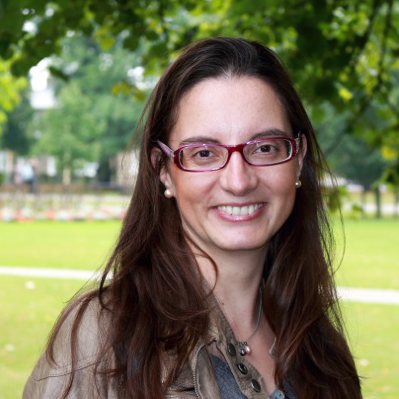 Cecilia Mascolo, Full Professor of Mobile Systems and Co-director of the Centre for Mobile, Wearable Systems and Augmented Intelligence, University of Cambridge, UK
Cecilia Mascolo, Full Professor of Mobile Systems and Co-director of the Centre for Mobile, Wearable Systems and Augmented Intelligence, University of Cambridge, UK
I am a computer scientist interested in mobile health, an emergent field in our ever-increasing digital world. Advances in technology make it possible to use mobile phones, tablets and smart watches to monitor patients in real time, collect medical data, and deliver information to patients, practitioners and researchers.
- Read more
-
With my team, we study efficient and effective ways for systems to capture the sounds of the human body and to allow early diagnosis of different diseases using artificial intelligence. Anomalies in sounds like heartbeats, sighs, breathing, voice, are indicators of disease and, as such, a powerful source of medical information. Funded by the ERC, we aim to optimise audio technologies in these devices to detect the onset and follow the progression of a number of respiratory and cardiovascular diseases, with an enormous potential for large-scale and cost-effective diagnostics.
We are currently launching an app for a broad data collection on COVID-19. Dry cough and shortness of breath are specific symptoms of the disease. We want to develop machine-learning algorithms to automatically detect if someone is suffering from COVID-19, based on the sounds of their voice, breathing and coughing.
People who believe to have COVID-19 can install the app on their mobile phone and introduce data on the evolution of their symptoms. They will be asked to record some coughs and a few seconds of breathing, as well as reply to questions about their body temperature, cough frequency, pulse rate, gender, age and existing medical conditions. People can take part in this study on a voluntary basis, contributing to the research on the disease. Ultimately, our idea is to develop audio-based analytics for an automatic assessment of COVID-19 mainly through sounds.
Cecilia Mascolo was awarded an ERC Advanced Grant in 2019.
03-04-2020
Informed policymaking against COVID-19
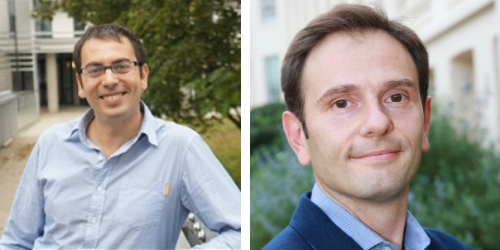 Andrea Galeotti, Professor, London Business School, UK and Paolo Surico, Professor, London Business School, UK
Andrea Galeotti, Professor, London Business School, UK and Paolo Surico, Professor, London Business School, UK
Andrea Galeotti: My ERC grant is about networks. I try to understand interconnections between firms and individuals that take economic decisions which impact others as well. A key question I try to answer is how decision makers can formulate targeted interventions based on heterogeneity in interconnection across economic agents to achieve their goal effectively. Before the pandemic I applied those questions to industrial organisation and digital markets.
- Read more
-
Paolo Surico: My research is almost the empirical counterpart to Andrea’s. Throughout my three ERC grants I tried to identify those individual characteristics that make firms or households more likely to respond to policy measures. We can use this for two things: to develop more effective, targeted policies and to evaluate competing policies. How does this relate to COVID-19? We realised there was a lot of misinformation that made it hard for people to make sense of numbers. In the end, COVID-19 is about networks - contagion, diffusion - this is what Andrea is a specialist in. Thinking about the data, the government would love to know which individual characteristics can predict the groups most likely to get infected and spread the disease, to design better, targeted health and economic policies. And this is where I step in.
We came up with a narrative – a lecture and different videos - without a political angle, just a scientific analysis of the pros and cons of policymaking.
Andrea Galeotti: We started to work on COVID-19, because of the different policy approaches of two countries we are close to, Italy and the UK. A few weeks ago, they were operating very differently. We realised there wasn’t really a way for people to properly inform themselves about the different trade-offs to these countries’ choices. So, we started to study and collect data. We came up with a narrative – a lecture and different videos - without a political angle, just a scientific analysis of the pros and cons of policymaking. We update this continuously, so that users can get the most up-to-date information.
I’m hoping this is really academics getting out of their ivory towers and talking directly to people, as well as policymakers that can use their work.Paolo Surico: We would like the users of this work to be both the general public and politicians. In a way, we use the tools we developed during our ERC grants, to generate a menu of policy options, presenting their trade-offs in a way that a non-technical audience can understand. We chose a bottom-up approach, distributing these tools through social media, and now they’re getting picked up by large newspapers, and we’re getting contacted by policymakers. We are collaborating with the major of the city of Bergamo to create tools that hopefully can be used by all majors in Italy. We advise the coordinator of the health service in the Italian region of Lombardy, we are talking to the European Commission. I’m hoping this is really academics getting out of their ivory towers and talking directly to people, as well as policymakers that can use their work.
One of the outcomes of COVID-19 will be creating lasting collaborations between researchers.
Andrea Galeotti: I think one of the outcomes of COVID-19 will be creating lasting collaborations between researchers. Researchers like Paolo and I, but also across different disciplines. We have received a lot of interest from health specialists, epidemiologists, engineers. I think even more of this will happen after the crisis is over.
More information about Prof. Galeotti’s and Surico’s work:
A user guide of Covid-19: introduction. [Video]
A user guide of Covid-19: part I: gathering facts. [Video,Slides]
A user guide of Covid-19: part II: epidemiology for dummies. [Video, Slides]
A user guide of Covid-19: part III: economics for dummies. [Video, Slides]
A user guide of Covid-19: part IV: policy options. [Video,Slides]Paolo Surico won an ERC Starting Grant in 2010, an ERC Consolidator Grants in 2014 and another ERC Consolidator Grant in 2017.
Andrea Galeotti won an ERC Starting Grant in 2011 and ERC Consolidator Grant in 2016.
01-04-2020
HIV research helping to tackle the COVID-19 pandemic
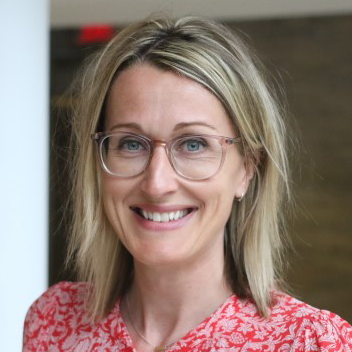 Pia Dosenovic, Assistant Professor, Karolinska Institute, Sweden
Pia Dosenovic, Assistant Professor, Karolinska Institute, Sweden
Vaccination gives us protection against pathogens thanks to our B cells – a type of white blood cells that produce antibodies. My ERC-funded research project focuses on understanding how B cells obtain specific qualities needed to protect against HIV-1 and other viruses.
- Read more
-
Quite a few insights from the study of HIV-1 could be applied to the current pandemic
HIV-1 and SARS-CoV-2 are two very different viruses and behave quite differently. However, every day we are learning new things about SARS-CoV-2. Even though HIV-1 and SARS-CoV-2 are both RNA viruses, SARS-CoV-2 is not as variable as HIV-1, which means it doesn’t mutate as often. However, we don’t know if a slightly different variant of the virus may appear at a later time, so it could become important to make a vaccine targeting the part of the virus that is least likely to change. We also need to understand how to make vaccines that give long-lasting immune responses. These are things I am also thinking a lot about in my research.
Quite a few insights from the study of HIV-1 could be applied to the current pandemic. In fact, many scientists that were a part of the initial HIV-1 epidemics are now engaging in this situation and I believe that they, together with non-HIV scientists, provide expertise that will help in handling this crisis. For one thing, the HIV epidemics and the long-term search for a vaccine against that virus have enabled scientists to optimise methods to study immunity and to gain information about the immune system that we would otherwise not have. For example, the identification of HIV-infected individuals with rare single B cells and their antibodies that are able to neutralise the virus efficiently has helped generate therapeutic antibodies that are being tested against HIV-1. The same workflow is now being applied in many labs around the world to generate therapeutic antibodies that could be used to treat COVID-19.
The vaccine work is unfolding at record speed
When it comes to a vaccine against SARS-CoV-2, the work is unfolding at record speed. A vaccine is normally first tested for safety and efficacy in animal models at a pre-clinical stage. Larger amounts are then produced for phase 1, 2 and 3 clinical testing of safety and efficacy in humans. Then it is mass-produced to meet the needs of the entire population. Due to safety, no step can be omitted, and usually these steps take place one at a time. However, in this situation some steps are being done in parallel to speed up the process. Several possible vaccines against SARS-CoV-2 are already being or will soon be tested in Phase 1 clinical trials in humans. However, it is difficult to predict exactly when we will have the first approved vaccine.
What we are experiencing now is a tough reminder that infections are real threats and that we need to be more prepared for next time something like this happens. It also shows just how important herd immunity is and that vaccines are the only safe way to achieve it.
Pia Dosenovic was awarded ERC Starting Grant in 2019.
27-03-2020
Epidemics: Learning from the past
 Barbara Bramanti, University of Oslo/University of Ferrara
Barbara Bramanti, University of Oslo/University of Ferrara
Our ERC project explored mechanisms of plague transmission to explain how plague spread in medieval times. Nineteenth century scholars discovered that rats and rat fleas could transmit plague to humans but there were some inconsistencies in that infection model. We tested the human-to-human transmission model mediated by human parasites (fleas and lice) with statistical analyses and proved that it is plausible. This finding can also be of help nowadays to tackle plague adequately. We observed how the Third Plague Pandemic in 1894 stopped in Europe at the middle of last century, in concomitance with the introduction of insecticide, but also of private baths, washing machines, the vacuum cleaner and other means to enforce personal and environmental hygiene. In other parts of the world, where reservoirs (e.g. infected wild rodents and their flees) are present, sporadic episodes of infection or epidemics are still recorded every year.
- Read more
-
Plague circulated from one place to another due to trade and travel
To test the dynamics of plague in time and space, we analysed the DNA obtained from the teeth of more than 400 plague victims and we obtained genomes of the plague-causing bacteria (Y. pestis) which were placed on a phylogenetic tree. The outcomes of the analyses, interpreted in the context of historical information, support the hypothesis that plague was repeatedly imported into Europe from outside and that it was circulated from one place to another due to trade and travel, exactly as it happened at the time of the Third Pandemic. The biggest plague epidemic known to date, the Black Death itself (1346-1353) and the following wave (pestis secunda 1357-1366) seem to have found their origin not far from the Volga region and have followed the fur-trade routes to spread into Europe.
Diverse epidemic infectious diseases caused Europe to tremble
The reason why the spread of plague in Europe has been much reduced is also to be found in the effective measures taken to prevent and contain the contagion. During the 19th century, diverse epidemic infectious diseases caused Europe to tremble, due to the introduction of steam locomotive and steamships, which started the process of globalisation. As a response, several International Health Conferences (Venice 1892, Dresden 1893, Paris 1894) were convened to find a consensus to prevent and combat contagion. The first International Health Conference on plague, took place shortly after two first plague cases were found on two ships from Bombay docked on the Thames. The measures suggested by the Conferences sought also to stem negative economic consequences: trade and travel from infected regions were not banned, but rigorous controls were carried out both in the country of origin and on arrival of trains and vessels.
Cooperation and solidarity between countries is important
To fight the plague, the best results have been achieved where rapid action has been taken to contain the contagion: quarantine and isolation of confirmed and suspected patients; intensified where cleaning and disinfection has been intensified; respect for where the dignity and needs of those affected or suspected; and the responsive cooperation of the citizens thanks to an intensive information campaign that accompanied the restrictive decrees, it has been possible to obtain the responsive cooperation of the citizens. Tracking the spread and reconstructing transmission chains helped to understand the mechanisms of introduction and dissemination and put suspicious cases into isolation. Delegations and medical commissions were sent from around the world to the epidemic foci to improve comprehension of the dynamics of spread and help combat it. At the international level, cooperation and solidarity between countries is important in order never to lower our guard against the spread of infections.
Barbara Bramanti was awarded ERC Advanced Grant in 2012.
26-03-2020
Network medicine and the social network of the epidemic
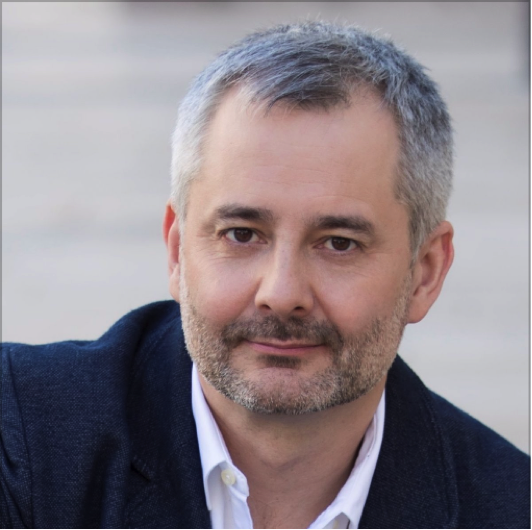 Albert-László Barabási, Central European University, Budapest, Hungary and Northeastern University, US
Albert-László Barabási, Central European University, Budapest, Hungary and Northeastern University, US
How can network science help us control epidemics? All the models currently used to predict the spread of the virus, as well as to test effective interventions, are based on network science. The virus spreads through the social network, and via the travel network.
- Read more
-
It is a network disease, hence you need to use network tools to develop strategies to control it.
Is our ERC funded project relevant in this context? Absolutely. The project is currently focusing on the dynamics of networks including diffusion through networks, like the spread of the coronavirus. The tools we hope to develop are expected to find their way into the toolset of network scientists tasked with modelling of the next epidemic outbreak.
Also, COVID-19 acts by perturbing the sub-cellular network of our cells, hence we need network science, and in particular the tools of network medicine, to find drugs that can be effective against it.
In this exceptional moment of need, we decided to turn the BarabasiLab's network medicine toolset to aid the hunt for a treatment for COVID-19. We will also forgo the usual guardedness of research, and post the results, as the arrive, here: https://t.co/HmzP1JfxWH. pic.twitter.com/Swui4OrYLW
— Albert-László Barabási (@barabasi) March 24, 2020Albert-László Barabási, together with László Lovász and Jaroslav Nešetřil was awarded ERC Synergy Grant in 2018.
25-03-2020
Trial of a possible COVID19 prophylactic treatment
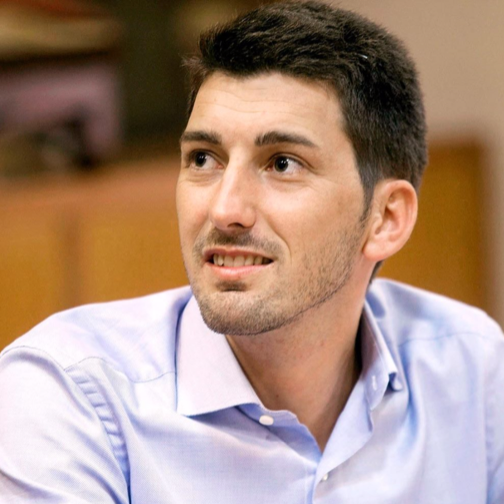 Dr Oriol Mitjà, Fight AIDS and Infectious Diseases Foundation, Spain
Dr Oriol Mitjà, Fight AIDS and Infectious Diseases Foundation, Spain
Dr Mitjà is leading a trial of COVID19 antiviral treatment and prophylaxis.
The COVID-19 emergency warrants the urgent development of new strategies to protect high-risk people, close contacts and health-care workers. The reason is that those infected, in 14 days, will on average pass the virus to 15% - 20% of their contacts. Our current clinical trials exploit the same strategy we use in the ERC project on syphilis. We are trying to repurpose the drugs, which have already been approved, commercialised and are on the market, for the use against this coronavirus. We use in vitro and animal model data to find the best, cheapest and safest drugs, and then to test them in human clinical trials.
- Read more
-
BBC World
— Oriol Mitja (@oriolmitja) March 19, 2020
Se hace eco de nuestro ensayo clÃnico sobre la quimioprofilaxis para proteger contra SARS-CoV-2
Our clinical trail on chemoprophylaxis to protect against SARS-COV-2 infection is encoded pic.twitter.com/gAWK0dvAA3This strategy is called post-exposure prophylaxis and is effective in preventing illness in a variety of microbial pathogens. We use an antiviral drug that has been shown to have an effect on coronavirus. The drug is called hydroxychloroquine. It inhibits the fusion of the virus in the host cell. Our hypothesis is that post-exposure prophylaxis with hydroxychloroquine administered to close contacts of an active case will reduce the incidence of contacts that develop the infection.
We are currently conducting a multi-centre clinical trial to evaluate the efficacy of these antiviral treatments and we will evaluate the reduction in transmissibility using a polymerase chain reaction test. Last week we started with the recruitment of patients and we expect to have the first results in about 3-4 weeks.
More on the researchIf the results are positive it could be widely used in any all settings and have the potential to be a game changer in the fight against COVID-19 worldwide. The study is done in coordination with the WHO and five related trials around the world. I have always had interest in neglected tropical diseases and strategies to control the transmission of infectious diseases.
I used to conduct research on treponema pertenue which causes a disease that affects children in Africa and Oceania. I also developed a line of research on syphilis and other sexually transmitted infections. My ERC project aims to discover and repurpose drugs to treat syphilis. We are conducting studies to find new molecules that are effective against the bacteria that causes this disease as there is currently a shortage of new medicines to treat syphilis.
Oriol Mitjà was awarded ERC Starting Grant in 2019.
24-03-2020
Using computational models to predict the spread of coronavirus
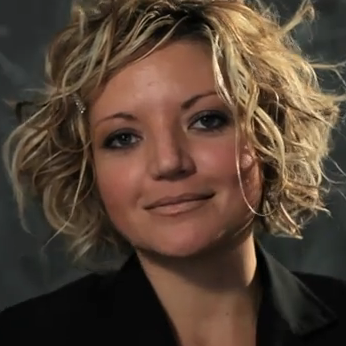 Vittoria Colizza, ERC grantee, computational epidemiologist and research director at INSERM
Vittoria Colizza, ERC grantee, computational epidemiologist and research director at INSERM
Due to the increasing mobility of people on a global scale, infectious diseases now spread rapidly and frequently reach epidemic, and in the case of the current COVID-19 virus, even pandemic proportions. How can the spread of such epidemics be better predicted, anticipated and controlled?
- Read more
-
I work in computational epidemiology, a new scientific discipline that brings together mathematics, statistics, computational sciences and epidemiology. This novel combination of different scientific disciplines and methods enables us, among other things, to collect and integrate massive datasets on historical epidemics with which to develop computational models. Such models can then be used to provide reliable, detailed and accurate predictions of the spread of future epidemics.
We are working around the clock to help manage the current health crisis
As part of the ERC-funded EPIFOR project, which ran from 2008-2013, together with my team I have developed an array of computational tools that could provide accurate predictions of future viral outbreaks, enabling a timely and efficient response to the threat. The aim was to enhance our ability to control the transmission of a disease, to better target interventions and to understand more about its effects on large populations.
During the lifetime of the project, we faced two emerging epidemics – the 2009 H1N1 pandemic (or swine flu) and the MERS-CoV epidemic – so we were able to concretely test our innovative approaches in real-life situations. These experiments confirmed the significant capabilities of the computational models developed and provided useful patterns on the potential future spread of infectious diseases.
Today I am research director at INSERM (French National Institute for Health and Medical Research), where we are working around the clock as part of a multi-disciplinary team to help manage the health crisis caused by the COVID-19 outbreak. Our work is supported by several other H2020 projects; however, the computational models and other tools developed during the EPIFOR project laid the foundation for this work and are proving to be instrumental. Over the course of the last couple of months, we have produced several important papers, using computational models to predict the spread of the disease and the expected impact of mitigation measures being implemented all over Europe.
Vittoria Colizza was awarded the ERC Starting Grant in 2007.
23-03-2020
Fighting the disinformation pandemic
Covid-19 is keeping people indoors, forcing us to social distance to try and contain the virus SARS-CoV-2. But while we sit at home, another aspect of this diseaseis proving rather "viral".
- Read more
-
The spread of fake news linked to its nature, propagation and cure seems as inevitable as it is damaging. Philip Howard, director of the the Oxford Internet Institute and ERC grantee talks to us about who stands to benefit from this different type of pandemic, why it occurs, and how we can behave to prevent untrustworthy information from circulating.Listening to this audio you are accepting SoundCloud cookies policyPhil Howard was awarded an ERC Consolidator Grant in 2014 and a Proof of Concept Grant in 2017.
20-03-2020
Developing SARS-CoV-2 antiviral drugs
 Marcin Nowotny, Group Leader, International Institute of Molecular and Cell Biology in Warsaw, Poland
Marcin Nowotny, Group Leader, International Institute of Molecular and Cell Biology in Warsaw, Poland
'We are a molecular biology group at the International Institute of Molecular and Cell Biology in Warsaw. In our work, we predominantly use two methods: protein crystallography and recently also cryo-electron microscopy. The two methods allow us to visualise molecules which are the gears of each living cell at the level of single atoms. This in turn allows us to understand how these molecules function in health and disease.
- Read more
-
To understand how molecules function in health and disease
The ERC grant was the main source of funding for our group for several years. It was thus instrumental in consolidating our research potential and also allowed us to explore medically relevant aspects of the atomic structures of proteins. For example, as a part of our ERC project we studied a protein that is in involved in the maintenance of the genetic information, which prevents mutations and cancer. Using protein crystallography we defined for the first time the atomic structure of this protein and its mechanism of action. Defects in this protein in humans lead to severe genetic diseases and we proposed the basis of these defects at the atomic level.
ERC grant was instrumental in consolidating our research potential
The information about the atomic structure of biological molecules is also instrumental in the design of new drugs. These are usually small molecules that specifically stick to a particular protein and block it. Over the last six years a subdivision of our group collaborated closely with the pharmaceutical industry on numerous projects in which we determined three-dimensional atomic structures of proteins with bound potential drugs. Such structures are invaluable in understanding how potential drugs work and in rational computational improvement of their properties.
Now we will contribute our research potential to the [coronavirus] project
We will now contribute our research potential to the project which aims at developing drugs for combating the new SARS-CoV-2 virus. We are part of large consortium EXSCALATE4CoV coordinated by an Italian company Dompe, which aims at developing substances that can be developed into antiviral drugs. The first step is a powerful computational search for candidate substances. The found chemicals will be next characterised experimentally and we will be involved in the determination of the atomic structures of viral proteins with bound candidate substances identified through the search. This information can be used to further optimise the initial compounds to develop them into antiviral drugs.'
Marcin Nowotny was awarded ERC Starting Grant in 2011.
19-03-2020
The basic science of immunity
 Aleksandra Walczak, Research Director, Centre national de la recherche scientifique, France
Aleksandra Walczak, Research Director, Centre national de la recherche scientifique, France
'I’m a physicist and I study the adaptive immune system. This is the army of cells that protects us from attacks, for example from viruses. They have specialised receptors that can recognise and respond to different pathogens. We have around the same number of receptors as there are people on the planet, and the composition of the cells with different receptors changes throughout our life. It’s a dynamic, complex system that can only be understood statistically.
- Read more
-
There are many things we don’t understand about [immunity]
We know this system works. We fight infections. But there are many things we don’t understand about it. For example, we’re hearing recently that different individuals show different reactions to COVID-19. Why is this? What makes a good immune system? What makes a bad immune system? Even if we are generally considered healthy, we’re not the same. This is clearer now more than ever.
In my ERC grant, my team and I study the co-evolution of viruses and the immune system. On the one hand, if we encounter a pathogen, the immune system will change to control it as best as it can. On the other hand, you can think of the spread of the virus as a pinball machine. We all put pressure on it by trying to fight it, so the virus evolves rapidly to try and find a way to move to a new host. They shape each other.
Basic science is important
I think this is a moment when everyone is realising that basic science is important. My group’s research is not directly in the battlefield, we will not find the immediate solution in a day or a month. But perhaps we can help answer basic questions like why are we seeing so many different responses to the virus and can we help people in some way? And, as the situation evolves, how will the virus coevolve to stay in the population? At the moment we don’t have a framework to think about these problems, but this is what me and the people I work with are trying to achieve.'
Aleksandra Walczak was awarded ERC Starting Grant in 2012 and Consolidator Grant in 2016. In 2018 she was awarded ERC Proof of Concept Grant.


